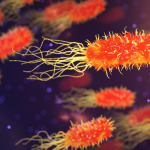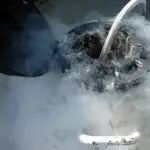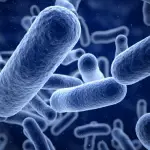
Xiphosura are horse shoe crabs belonging to the subphylum Cheliceramorpha of the Limulidae family. Such insects are typically characterised by long legs, a two-part body and claw bearing legs; only the terrestrial variety survives today, while most of their marine counterparts have been estimated to be extinct. They look similar to crustaceans and marine Chelicerates who were known to have lived during the Palaeozoic era.
Interesting facts about Xiphosura are:
Xiphos is derived from the Greek word meaning ‘˜sword’ while Uros means ‘˜tail’ thereby giving the name to the horseshoe crab, Xiphosura. Similar to its name, these creatures have overlapping gills used for respiration and a long spine or tail. The tail also helps them flip over for burrowing.
An adult Xiphosura crab measures approximately 24 inches in length. Fossil records reveal that its Palaeozoic species measured around as little as 1-3 cm long before evolution.
Horseshoe crabs are also known as King Crabs.
Horseshoe crabs or Xiphosurans have compound eyes. Compound eyes comprise of many subunits known as Ommatidia and are covered by a single layered thick cornea. At the centre of the head, they have the ocelli or two single eyes.
The 4 living species of the Xiphosura or Horse Shoe crabs include Carcinoscorpius rotundicauda, Limulus polyphemus, Tachypleus gigas, Tachypleus tridentatus. These Xiphosura are found in Southeast Asia, American Atlantic coast including Gulf of Mexico, and Southeast and East Asia respectively.
Over the years, the Xiphosura species is said to have evolved greatly; changes can be noted in their increase in size, restriction to marine habitats and a loss of segmentation in general. Late Palaeozoic and Mesozoic forms of the horseshoe crabs have been studied to have survived brackish and fresh water although they are all typically marine creatures living at a usual depth of 100 feet.
Very few diversities of the Xiphosura can be seen today with most of them having become extinct.
The diet of these horseshoe crabs comprise primarily of molluscs, worms and different kinds of nutritious marine invertebrates.
The food consumed by them is masticated by the spines thereby tearing up whatever they consume before its passage into the mouth.
Xiphosurans come to land during the mating season and can be found in abundance on the beaches. They also lay their eggs in shallow water or beach sand close to the sea. Xiphosurans are estimated to reach sexual maturity in about 3 years after growth.
These creatures have been used and even harvested extensively for use in medical research, preparing food, manufacturing fertilisers etc.
The hard outer covering of the crabs protect their body and is called the carapace.
Although they have as many as four eyes, they cannot form a true figure but can only detect the approaching of objects or movement near them.
Much has been researched about this unique species of crab due to their similarity with the Arachnids and their fossils. Although Xiphosura have fortunately not been endangered yet by man’s activities, habitat destruction and over harvesting can well affect the survival and evolution of the species in the near future, thereby throwing up cause for concern as far as prominent environmentalists are concerned.










Leave a Reply